The life of the monarch butterflies
Monarch butterfly migration has a history that repeats every year!
On Saturday, Sept. 9, the University of Tennessee Arboretum will host its annual Butterfly Festival. https://utarboretum.tennessee.edu/butterfly-festival-2023/.

Carolyn Krause has written an article on the monarch butterflies, hundreds of which are born in Oak Ridge in the fall and then fly to Mexico to hibernate from late October to mid-March before mating. Her article on the monarch life cycle and migration patterns is based on a presentation by Kris Light to the Friday Lecture Series class of the Oak Ridge Institute for Continued Learning (ORICL).
Enjoy the insights provided by Kris and captured here for you readers by Carolyn.
***
East Tennessee is called Big Orange Country as a tribute to the nationally acclaimed University of Tennessee football program to which so many Tennesseans are loyal. But Oak Ridge’s Kris Light and other butterfly enthusiasts may view our area also as Little Orange Country when hundreds of orange-and-black monarch butterflies alight on milkweed and other plants in local flower gardens.

These butterflies spring from either the fourth or fifth generation of monarch caterpillars for the year in the United States and southern Canada; the beautiful, winged insects will fly from Oak Ridge and the American South in the fall to spend winter in Mexico. Kris knows this for sure; in 2020 before the COVID-19 lockdown, she and her husband visited butterflies wintering for four to six months in the Monarch Butterfly Reserve in the Mexican mountains before they mated, produced the first generation of their species for the year in the continent, and then died.
Kris has taught environmental education through Oak Ridge National Laboratory and the American Museum of Science and Energy for nearly 35 years. For 13 years, she taught students at Willow Brook Elementary School in the Science Discovery Center.
Using their tube-shaped mouth part (proboscis), butterflies eat only liquids, such as nectar from flowers, sweat, and even animal urine.
"If a butterfly lands on you, it’s because it wants to drink your sweat to get its salt,” she told the ORICL class. “In the Smokies, male butterflies take up salt from horse droppings that they pass onto females when they mate.”
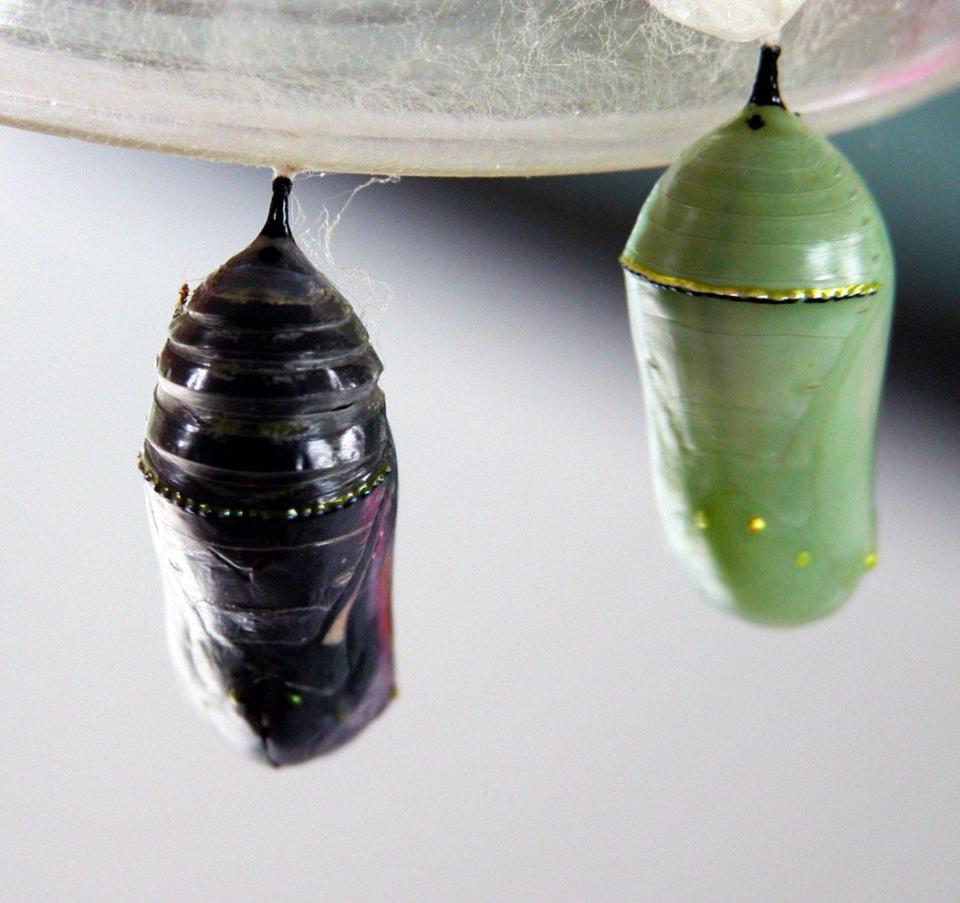
Butterflies smell through their antennae. The sense of smell of a monarch butterfly is 5,000 times stronger than the human sense of smell. Then there’s the question of how they taste food. Here was her answer.
“I once asked kids in a class, ‘How do you think a butterfly tastes?’ One kid goes, ‘Probably, pretty bad.’ So, I said, ‘Let me rephrase that. What part of the body do you think a butterfly tastes with?’ The answer is their feet. When they land on a flower, they taste the nectar with their feet and then the mouth part comes out to drink the nectar from the flower.” She added that, compared with humans, the monarchs’ sense of taste is 2,000 times more sensitive to sugars.
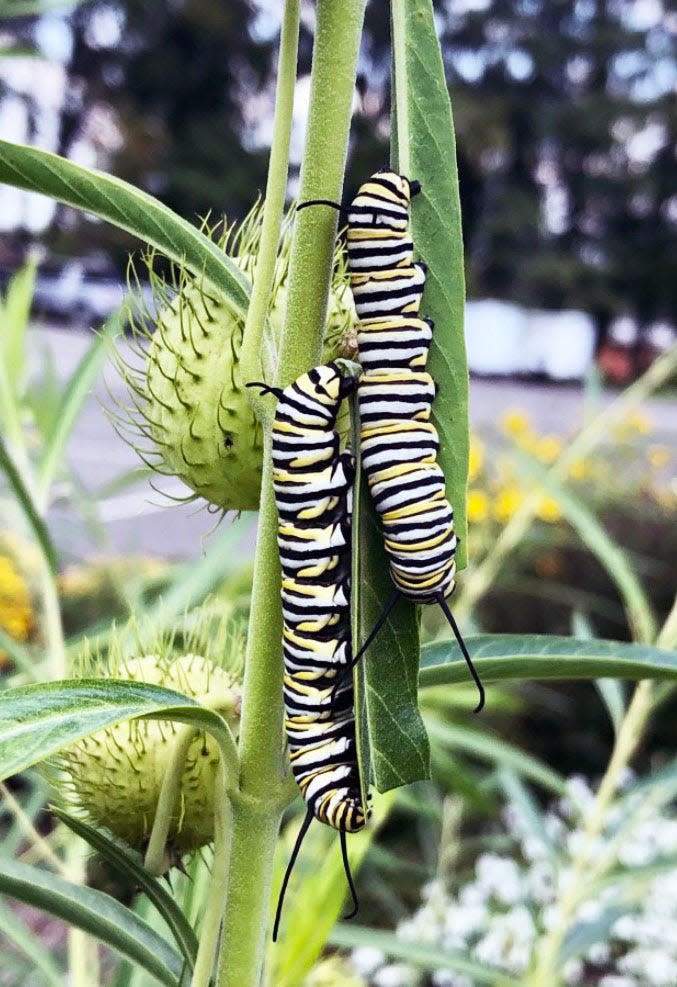
Monarch caterpillars, butterflies poisonous to birds
Female monarchs lay their eggs only on milkweed leaves because the leaves have a poison that the caterpillars store in their bodies. Milkweed makes monarch caterpillars and butterflies poisonous to birds.
Kris said the six-legged females use the six microscopic needles in their almost invisible two front legs to pierce leaves to test whether they have the cardiac glycoside poison present in milkweed. Birds who eat poisoned butterflies become sick and never eat them again; birds learn that the bright colors on butterflies are a warning to avoid feasting on them. Only one type of mouse and two birds in Mexico can tolerate eating monarchs.
“Reproduction in insects,” she stated, “is usually the kiss of death. After they lay their eggs, most female insects die. Male butterflies die after they mate so they won’t compete with their offspring for food.”
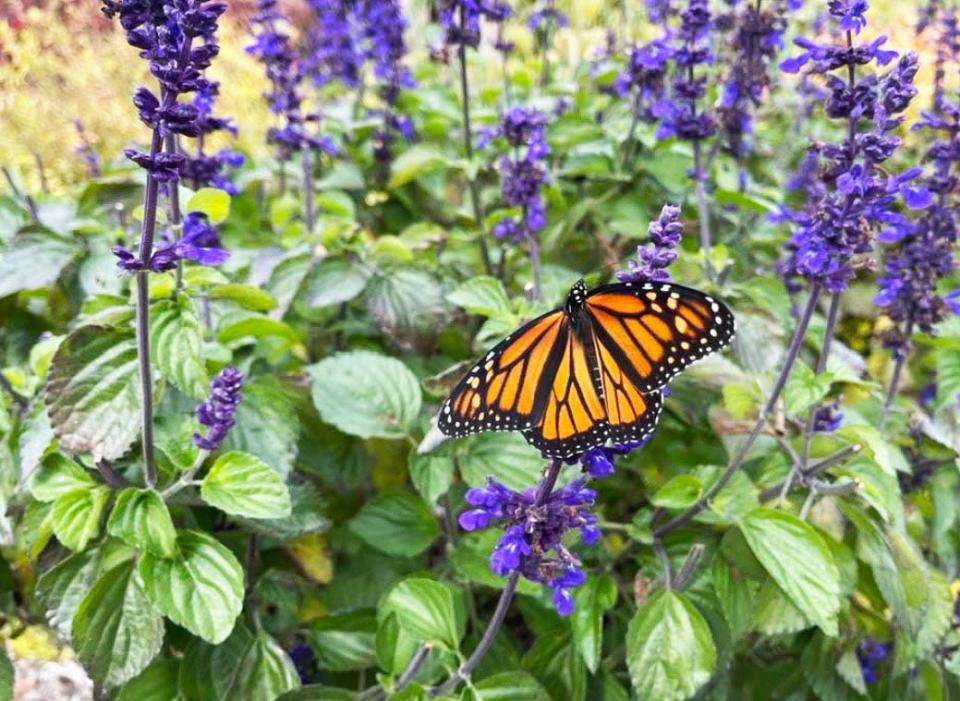
The fourth and fifth generations of monarch butterflies that fly south to Mexico is called the Methusaleh generation because they delay mating, allowing them to live four or more months. The earlier generations of butterflies live only a few weeks because they die shortly after mating.
After their winter hibernation, the butterflies mate in Mexico, creating the first generation that will mate and then fly north. The female monarchs use some sperm packets for fertilizing eggs and others for nutrition during the flight north to southern Texas and Louisiana in mid-March. That’s where they each lay from 400 to 1,000 eggs – each the size of a pinhead – on milkweed leaves to start a second generation of caterpillars.
Butterflies go through a complete metamorphosis, from egg to larva to caterpillar to pupa to chrysalis to winged insect - the beautiful monarch butterfly.
"It takes five days for each egg to develop into a caterpillar about two millimeters long,” Kris said. “The caterpillar eats its high-protein eggshell, sheds its skin five times and eats milkweed leaves.”
Around mid-May, Generation No. 2 flies to the central part of the United States (including East Tennessee), lays eggs on milkweed leaves, and produces generation No. 3, which flies to the northern United States and southern Canada around mid-July or early August.
“They produce generation No. 4, which are the great-grandchildren of the butterflies that came up from Mexico,” Kris said. “This group may migrate to Mexico or fly back to the central part of the United States, including East Tennessee, to produce generation No. 5, which will then migrate to Mexico.”
The monarchs’ five generations travel a total of about 2,000 miles over a year in North America, Kris said, adding that they can fly more than 250 miles per day on a 35 mile-per-hour southbound wind at an elevation of 10,000 feet.
Up to 600 million butterflies spend the winter in the Oyamel fir trees in the forested mountains of Angangueo, Mexico, which Kris and her husband visited in January 2020. The fir trees prevent the butterflies from freezing. Clustered together on the fir tree branches, the butterflies warm their wings in the sun. A cluster of more than 10,000 butterflies, each weighing half a gram, can cause tree branches to bend and sometimes even break.
Not all monarchs born in the fall in the United States fly to Mexico for the winter. The butterflies living west of the Rocky Mountains migrate to the California coast, and others fly to Florida.
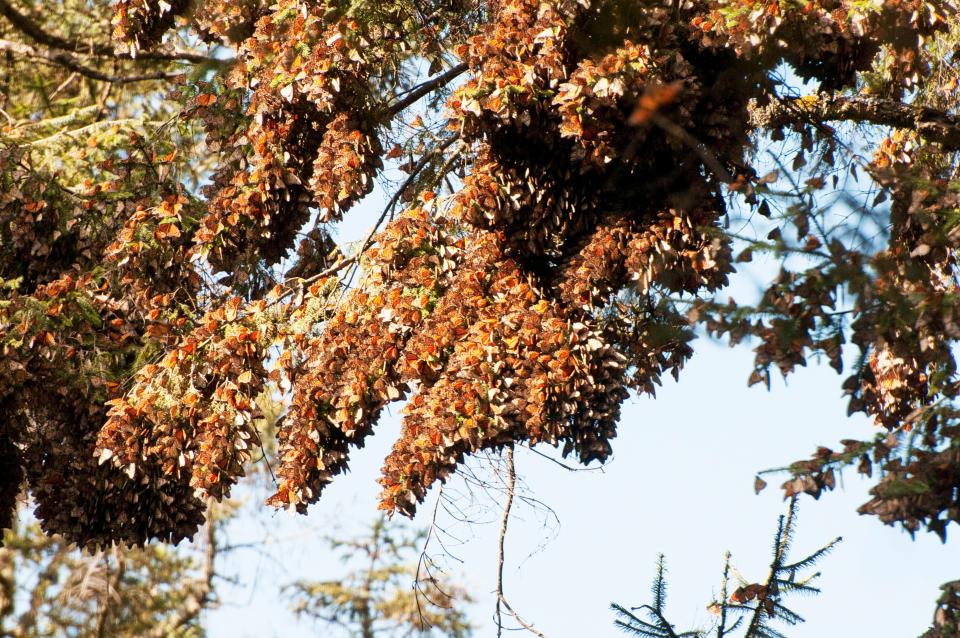
According to Kris, the quest to learn the destination of monarch migration in North America was solved beginning in 1930 by Canadian entomologist Frederick Urquhart, then at the University of Kansas. He started tagging butterflies and enlisted people from all over North America to start tagging the butterflies. That way butterfly catchers will know where the butterflies came from – information they are encouraged to send to the University of Kansas.
Urquhart and his wife Norah identified the monarchs’ migration routes, discovered that the migration spans multiple generations, and found their wintering place in Mexico, with the help of Kenneth Brugger, an American businessman living in Mexico City, who discovered in 1975 that millions of monarchs clustered in the forested mountains above Angangueo.
In 2009 Kris met entomologist Lincoln Brower at Roan Mountain State Park in northeast Tennessee where he dedicated a Monarch Waystation (the UT Arboretum has one, too). She said that this champion of the monarch, who died in 2018, discovered that monarchs navigate by the sun. Recent research indicates magnetite crystals discovered in their heads by Brower enable monarchs to use the earth’s magnetic field to orient themselves south (like a compass). Because of the different kinds of milkweed plants in our country that each have their own specific chemical, Brower reported, the birthplace of each butterfly can be chemically determined.
It was reported in 2013 that the area in Mexico occupied by monarchs in winter has plummeted from seven to three acres. Brower and others have identified reasons for the monarch population decline: pesticides (including nicotides) and pollen from genetically engineered crops that can render milkweed and nectar poisonous to monarchs; diseases; urbanization; the mowing of fields of milkweed and logging of the Mexican forest where monarchs winter; destruction of the forest to obtain land for tourism and agricultural activities such as growing profitable avocado trees, and climate change that may be responsible for abnormal patterns of drought and rainfall that have adversely affected U.S. and Canadian breeding sites, possibly causing adult butterfly deaths and less plant food for caterpillars. Monarchs have internationally been declared endangered.
Kris said new threats to the monarchs in Mexico are cartels looking for a way to profit from agriculture and the bustling tourist trade in Angangueo. Fortunately, the World Wildlife Fund seeks to preserve vital butterfly habitat in Mexico’s Monarch Butterfly Reserve by working with the Mexican government, local communities and other partners to promote good forest management and sustainable tourism. It also supports tree nurseries that help restore the forest in the reserve, creating new sources of income for the local people living in the region.

We want our monarchs from Oak Ridge to enjoy their winter in Mexico!
***
Now you know more about our monarch butterflies! You can learn even more by going to the UT Arboretum Saturday and here is what you can experience.
10 a.m. to 1 p.m. - UT Insect Zoo with Jerome Grant
10 a.m. – “Wild and Native Pollinators in Your Backyard” with Laura Russo
10:50 a.m. – “All Weeds Are Not Weeds. Just Ask a Butterfly!” with Stephen Lyn Bales
10 a.m. to 1 p.m. - Children’s Crafts for $1 a ticket , cash or card
10 a.m. to 1 p.m. – Craft and book vendors
D. Ray Smith is Oak Ridge city historian. His "Historically Speaking" column appears in The Oak Ridger each week.
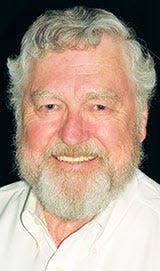

This article originally appeared on Oakridger: The life of the monarch butterflies; Butterfly Festival Saturday
